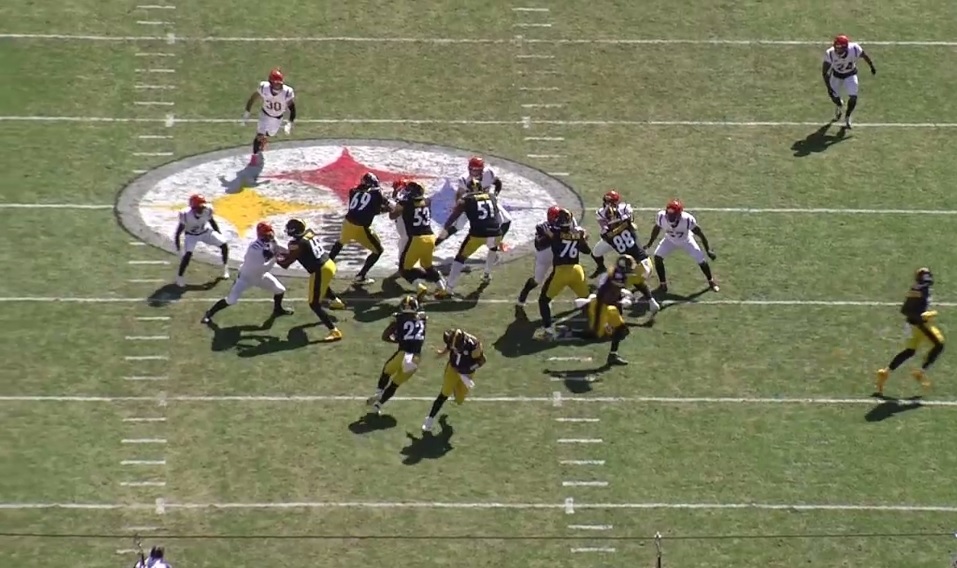The Steelers wrapped up this year’s draft class without selecting a running back a year after spending a first-round pick on Najee Harris. The selection of Harris marked four running backs drafted by Pittsburgh over a five-year span – Najee Harris 2021, Anthony McFarland 2020, Benny Snell 2019, James Conner 2017. Even though the Steelers didn’t make an official pick at the position in the draft this year, they did however sign two prospects as UDFA’s – Mataeo Durant of Duke and Jaylen Warren of Oklahoma State.
The additions of Durant and Warren are interesting ones. Harris is obviously the featured workhorse in Matt Canada’s offense. The backup situation though is unclear. A pair of former fourth-round picks, Snell and McFarland, have mostly served complimentary roles since arriving in Pittsburgh. Trey Edmunds is also currently on the roster heading into the final year of his contract, and the running back who logged the third most snaps last season, Kalen Ballage, is no longer on the team.
How the running back room will look this year is truly to be determined. What we do know from last season within the Matt Canada offense was a lot of inside zone runs were called. During the regular season only, the Steelers had the fourth-highest rate at 44% of inside zone rush attempts – a rate which has increased in recent years.
The uptick of inside zone runs, coupled with the arrival of Najee Harris, are validated as Harris excels within the scheme. Coming out of Alabama, Harris rushed for 886 yards on 154 carries (5.8 avg) with 7 TD’s and 33 explosive runs of 10 or more yards as well. In his first season with the Steelers, Harris led the league in both rushing attempts (155) and yards (737) to go along with a league leading 21 runs of 10+ yards. What is currently lacking behind Harris though are suitable backups who succeed within the IZ concept at the NFL level.
Looking at the table below are the running backs currently on Pittsburgh’s roster who have NFL experience along with their IZ rushing performances. For good measure, Kalen Ballage’s numbers from the 2021 season were included – which also happens to be his only IZ rushing attempts over his four-year career.
One might say the performances behind Harris is lacking a bit. What makes the conversation more interesting moving forward are the UDFA additions. Both Durant and Warren bring with them vast inside zone experience and success during their respective college careers. Granted, Snell and McFarland also experienced their own success at the collegiate level as the numbers below indicate.
Snell feasted on IZ runs at Kentucky and McFarland’s numbers were also impressive at Maryland. To date though the inside zone success hasn’t translated to the NFL level and perhaps a reason why Pittsburgh decided on signing the two running backs they chose. Of note with both Durant and Warren – inside zone run plays accounted for each on exactly half of their rushing attempts in college.
If Pittsburgh’s plan is to utilize the inside zone run concept at a high rate again this season, there could be some training camp and preseason battles ahead in the backfield. The signings of James Daniels and Mason Cole would indicate IZ still factors into the run plans. Over Daniels’ NFL career, 52% of his overall run blocking snaps have consisted of inside zone plays. Cole an even higher rate at 69%.
The inside zone run scheme is just one part of offensive system under Matt Canada. There’s no guarantee that we’ll see a high rate of those same runs called in 2022. If there are, Pittsburgh landed two running backs post-draft who each have experience within the concept.










